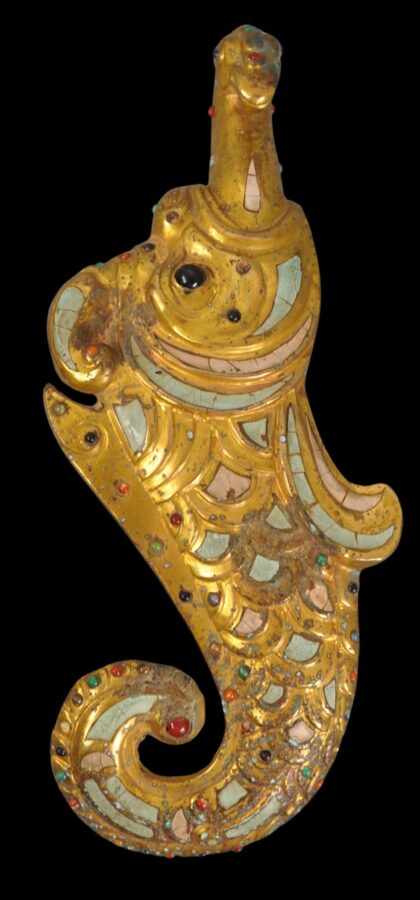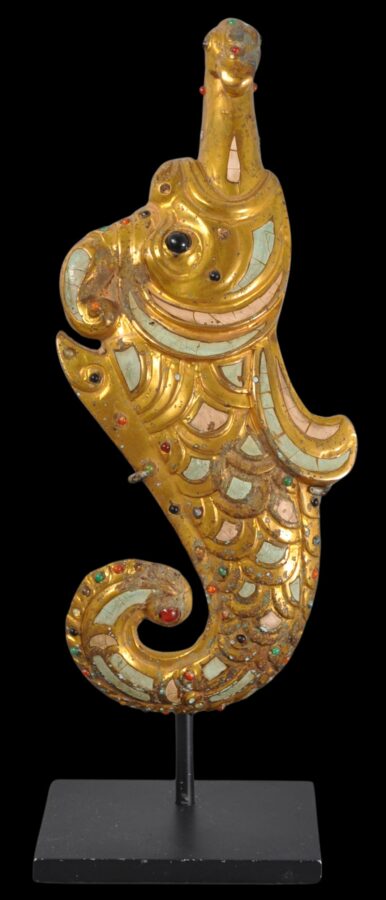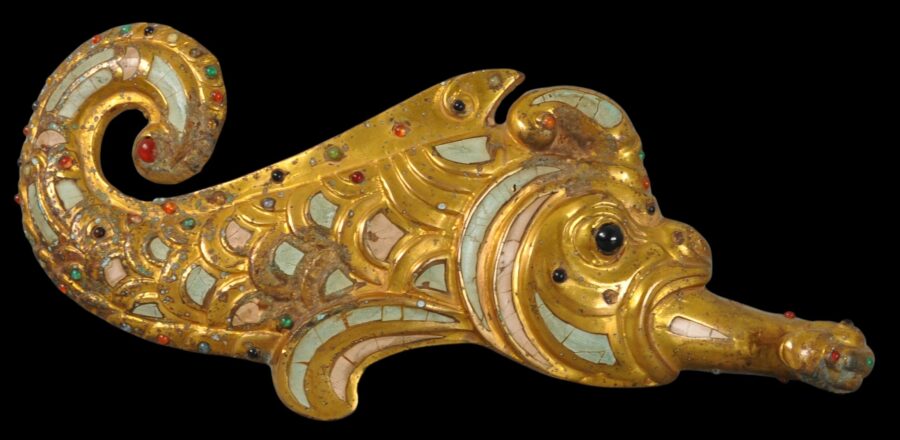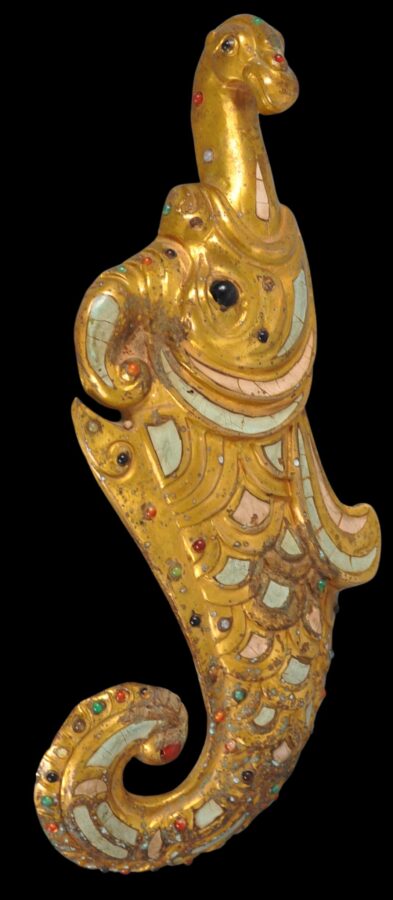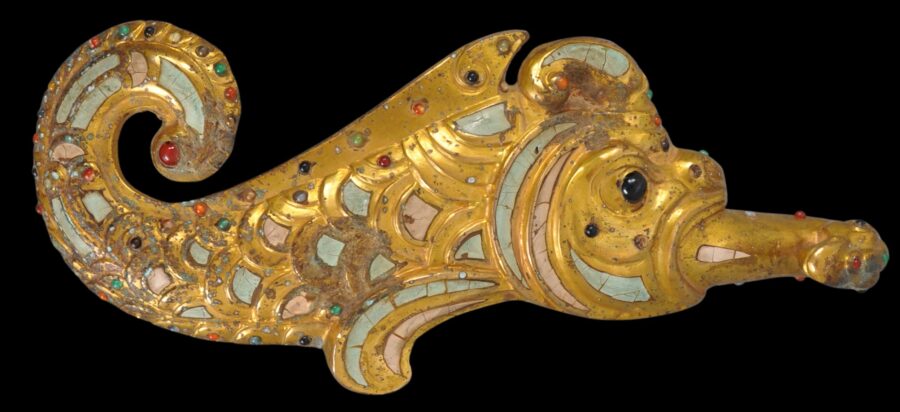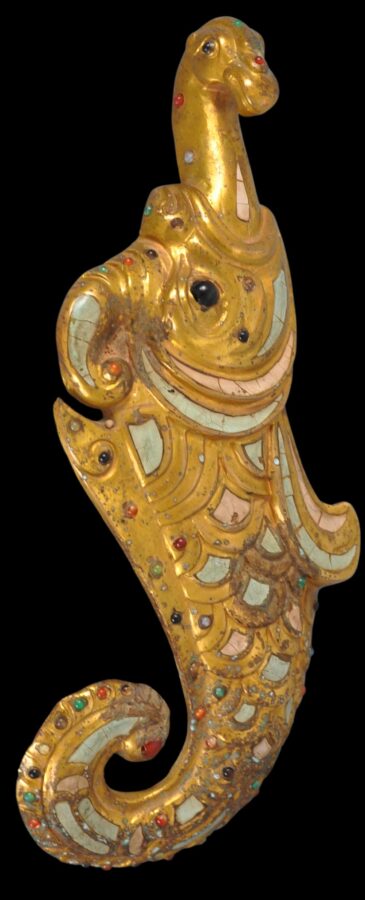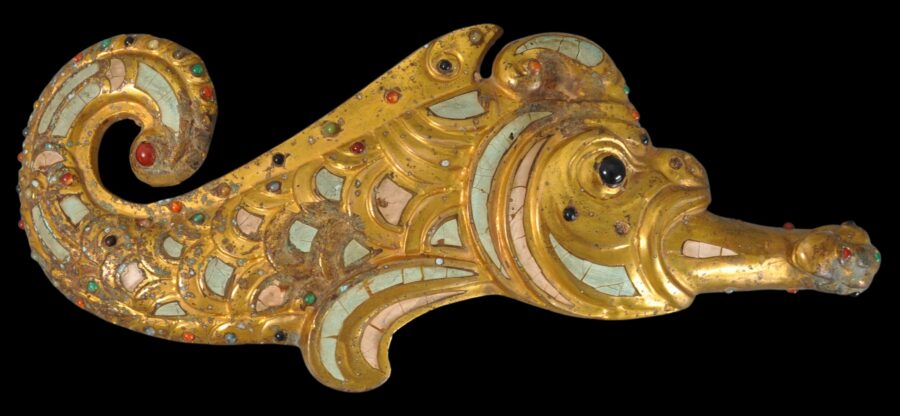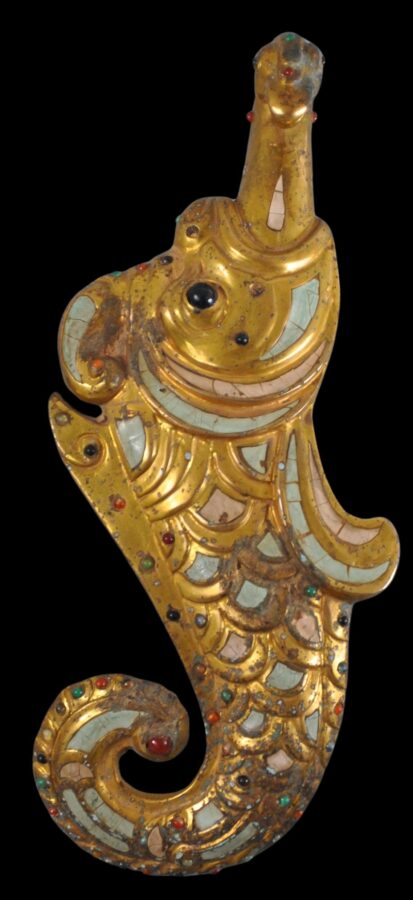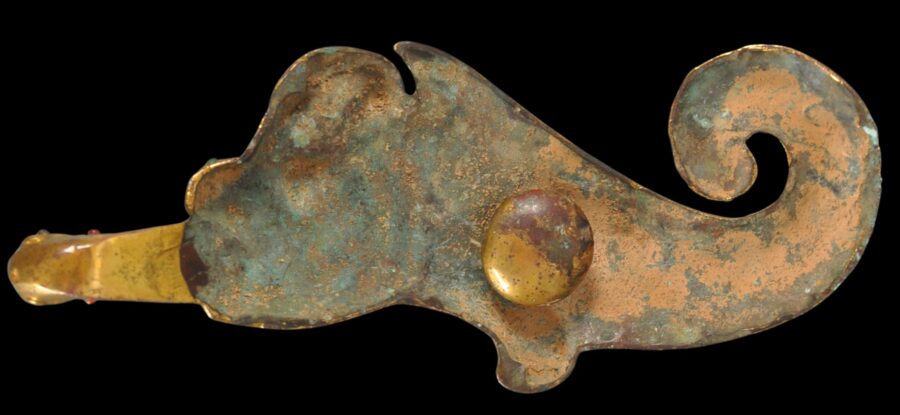This garment hook of gilded bronze and inlaid with gems and glass is of unusual form in that it comprises a horned fish-like creature with a beautifully curved tail disgorging the head of a dragon.
The hook is gilded all over and inlaid with light blue and light pink tiles of what is probably stained bone panels. Additionally, it is inset with red, orange and green stone cabochons.
It is the dragon head, which is gilded and set with small stone cabochons, which functioned as the actual hook.
The form and decoration is reminiscent of a pair of Han Dynasty finials in the Xi’an Museum and another pair in the Harvard Art Museums/Arthur M. Sackler Museums and both illustrated in Sun (2017, p. 104). Images of mythical creatures gradually appeared in Chinese art from the fifth to the third centuries BC as a result of frequent contact with nomadic peoples from the north and west.
The bronze component would have been cast with the lost-wax process. Indeed, the production of such a garment hook would have been a labour-intensive process with a designer, a caster, a lapidarist, a gilder and an adhesives maker all being involved in the production.
Garment hooks (daigou or, in ancient Chinese xipi) were both decorative and utilitarian. They were used to secure the belt, or to fasten a sword or other implement to the belt. The semi-precious material from which many were crafted most probably was assumed to have protective or talismanic properties. The lustrous and colourful material used to decorate such hooks also meant that such hooks served as a type of jewellery for men, demonstrating position, power and affluence.
Much of the inlay in this example is present, and overall, it is in a fine, stable condition.
The garment hook is presented on a black, custom-made display stand.
References
Sun, Z.J., Age of Empires: Art of the Qin and Han Dynasties, Metropolitan Museum of Art, 2017.
White, J.M. & E.C. Bunker, Adornment for Eternity: Status and Rank in Chinese Ornament, Denver Art Museum/The Woods Publishing Company, 1994.
Xu, H. (ed.), The Treasures of the Nanjing Museum, London Editions, 2001.


